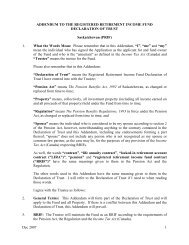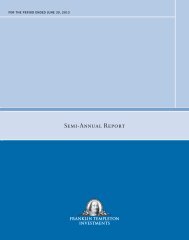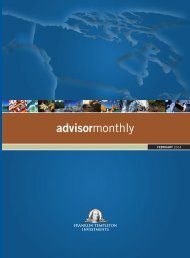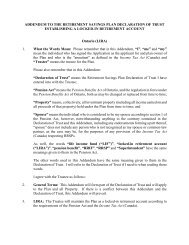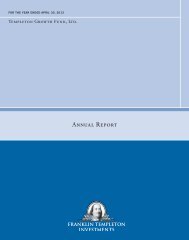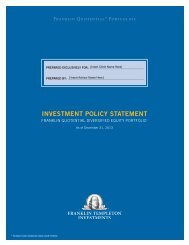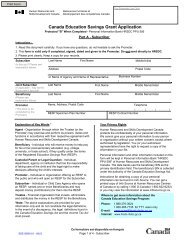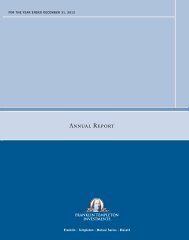PDF Version
PDF Version
PDF Version
You also want an ePaper? Increase the reach of your titles
YUMPU automatically turns print PDFs into web optimized ePapers that Google loves.
the position will be sustained upon examination based on the technical merits of the position, includingresolution of any related appeals or litigation. A tax position that meets the more likely than not recognitionthreshold is measured to determine the amount of benefit to recognize. The tax position is measured at thelargest amount of benefit that is greater than 50% likely of being realized upon settlement. We recognize theaccrual of interest on uncertain tax positions in interest expense and penalties in other operating expenses.As a multinational corporation, we operate in various locations outside the United States and generateearnings from our non-U.S. subsidiaries. We indefinitely reinvest the undistributed earnings of our non-U.S.subsidiaries, except for Subpart F income taxed in the U.S., subject to regulatory or contractual repatriationrestrictions or contractual repatriation requirements, and the excess net earnings after debt service paymentsand regulatory capital requirements of our Canadian and U.K. consolidated subsidiaries. As a result, wehave not recognized a provision for U.S. income taxes and a deferred income tax liability on $3.4 billion ofcumulative undistributed foreign earnings that are indefinitely reinvested at September 30, 2009. Changes toour policy of reinvestment or repatriation of non-U.S. earnings may have a significant effect on ourfinancial condition and results of operations.Loss ContingenciesWe are involved in various lawsuits and claims encountered in the normal course of business. Whensuch a matter arises and periodically thereafter, we consult with our legal counsel and evaluate the merits ofthe claims based on the facts available at that time. In management’s opinion, an adequate accrual has beenmade as of September 30, 2009 to provide for probable losses that may arise from these matters for whichwe could reasonably estimate an amount. See also Note 15 – Commitments and Contingencies in the notesto consolidated financial statements in Item 8 of Part II of this Form 10-K.Consolidation of Variable Interest EntitiesWe consolidate any variable interest entity (“VIE”) for which we are considered the primarybeneficiary. A VIE is an entity in which the equity investment holders have not contributed sufficientcapital to finance its activities or the equity investment holders do not have defined rights and obligationsnormally associated with an equity investment. The entity that has the majority of the risks and rewards ofownership, referred to as the primary beneficiary, is required to consolidate the VIE.We invest in various entities in the normal course of business and evaluate whether each entity is aVIE. For the entities determined to be VIEs, we assess whether we qualify as the primary beneficiary of theVIEs. Our VIEs primarily include certain sponsored investment products and certain other investmentproducts in which we hold an equity ownership interest. Other VIEs include limited liability partnerships,limited liability companies, and joint ventures. The form of variable interests that we have in VIEs generallyincludes our equity ownership interest and investment management and related service fees earned fromsponsored investment products. Our evaluation of whether we qualify as the primary beneficiary of VIEs ishighly complex and involves significant judgments, estimates and assumptions. We generally utilizeexpected cash flow scenarios to determine our interest in the expected losses or residual returns of VIEsfrom our investment management and related service fees or equity ownership interests held.The key estimates and assumptions used in our analyses include the amount of assets undermanagement, investment management and related service fee rates, the life of the investment product, andthe discount rate. These estimates and assumptions are subject to variability. For example, assets undermanagement are impacted by market volatility and the level of sales, redemptions, contributions,withdrawals and dividend reinvestments of mutual fund shares that occur daily. Also, investmentmanagement fees may be fixed or tiered based on the amount of assets under management, the life of a58



